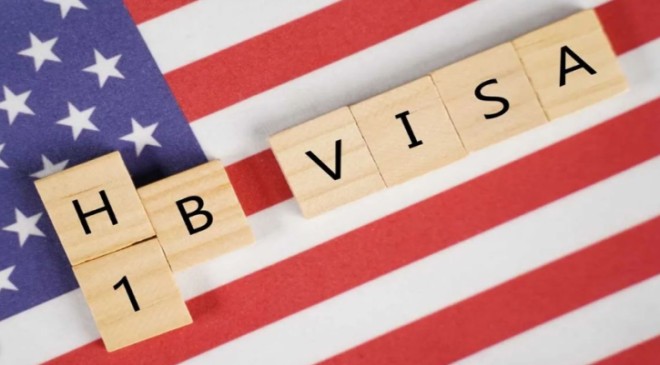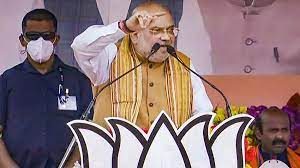The H1B visa program is one of the most popular and sought-after visa categories for foreign professionals who want to work in the United States. The H1B visa allows US employers to hire skilled workers from abroad, especially in the fields of science, technology, engineering, and mathematics (STEM), to fill the talent gap and boost innovation and competitiveness in the US economy.
Also Read– Global 5G Smartphone Shipment Crosses 2 Billion Units Over 2023
According to the US Citizenship and Immigration Services (USCIS), the H1B visa program has a statutory cap of 65,000 visas per fiscal year, with an additional 20,000 visas reserved for foreign nationals with a US master’s degree or higher.
However, the demand for H1B visas far exceeds the supply, creating a severe shortage and a fierce competition for the coveted visas. In the fiscal year 2021, USCIS received over 275,000 H1B petitions within the first week of the filing period, which was more than three times the number of available visas.
As a result, USCIS had to conduct a random lottery to select the petitions that would be processed, leaving many qualified and deserving applicants out of luck.
According to a report by the National Foundation for American Policy, the denial rate for H1B petitions increased from 6% in the fiscal year 2015 to 24% in the fiscal year 2020, indicating a stricter and more unpredictable adjudication process.
The H1B quota crisis has posed a serious challenge for US employers, especially those in the tech sector, who rely heavily on foreign talent to meet their workforce needs. According to a report by the American Immigration Council, the US will face a shortage of 1.1 million STEM workers by 2024, and the H1B visa program is a vital source of filling that gap.
Alternative Ways to Hire Skilled Workers from India
India is one of the largest and most important sources of skilled workers for the US, especially in the STEM fields. According to the USCIS, India accounted for 72% of the H1B petitions approved in the fiscal year 2019, followed by China with 13%.
India also has a large pool of young and educated professionals, with over 1.5 million STEM graduates every year, according to a report by the World Economic Forum. However, due to the H1B quota crisis, many US employers are unable to hire and retain Indian workers, and are exploring other options to tap into the Indian talent market. Some of these options are:
L1 Visa
The L1 visa is a non-immigrant visa that allows US employers to transfer their employees from their foreign offices to their US offices. The L1 visa has two subcategories: L1A for managers and executives, and L1B for workers with specialised knowledge. The L1 visa does not have a numerical cap, and does not require a labour certification or a prevailing wage determination.
O1 Visa
The O1 visa is a non-immigrant visa that allows US employers to hire foreign nationals who have extraordinary ability or achievement in the fields of science, education, business, athletics, arts, or motion pictures. The O1 visa does not have a numerical cap, and does not require a labour certification or a prevailing wage determination.
E2 Visa
The E2 visa is a non-immigrant visa that allows foreign nationals to invest in and operate a business in the US. The E2 visa is only available for the citizens of the countries that have a bilateral investment treaty with the US. India is not one of those countries, but there is a possibility that India and the US may sign such a treaty in the future, as they have been in negotiations for several years. The E2 visa does not have a numerical cap, and does not require a labour certification or a prevailing wage determination.
Remote Work
Remote work is another option for US employers to hire skilled workers from India, without the need for any visa or immigration process. Remote work allows the workers to perform their tasks from anywhere in the world, using digital tools and platforms.
Remote work has become more feasible and popular in the wake of the COVID-19 pandemic, which has forced many businesses to adopt work-from-home policies and practices. Remote work offers many benefits for both the employers and the workers, such as cost savings, flexibility, productivity, diversity, and talent retention.
The Impact on Indian IT Professionals
The H-1B quota crisis has a significant impact on Indian IT professionals, who make up a large portion of H-1B visa holders. The denial of an H-1B visa can mean that an IT professional has to return to India, which can be disruptive to their career and personal life. Additionally, the uncertainty surrounding the H-1B visa program can make it difficult for Indian IT professionals to plan for the future.
The Future of H-1B Visa Reform
The H-1B visa program is in need of reform. The annual cap should be increased to meet the demand for skilled foreign workers, and the application process should be streamlined. Additionally, Congress should consider creating new visa categories for specific occupations in high demand, such as STEM fields. The H-1B visa program is essential for the US economy and should be reformed to ensure that it continues to meet the needs of US businesses and foreign workers alike.
Conclusion
The H1B visa program is a critical and beneficial program for the US economy, as it enables US employers to hire skilled workers from abroad, especially from India, to fill the talent gap and boost innovation and competitiveness.
However, the H1B visa program is facing a severe crisis, due to the limited availability and high uncertainty of the visas, making it difficult for US employers to hire and retain Indian workers.
Also Read– Gold Rate Rises Today In India: Check 24 Carat Gold Price In Your City On February 24
Therefore, many US employers are looking for alternative ways to hire skilled workers from India, such as L1 visa, O1 visa, E2 visa, and remote work. The US and India should also work together to find a long-term and mutually beneficial solution to the H1B quota crisis, and to strengthen their strategic and economic partnership.



































